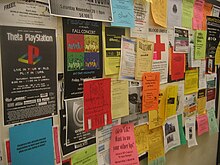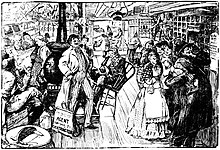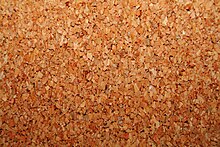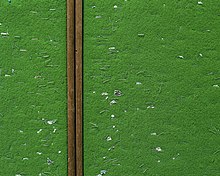



A bulletin board (pinboard, pin board, noticeboard, or notice board in British English) is a surface intended for the posting of public messages, for example, to advertise items wanted or for sale, announce events, or provide information. Bulletin boards are often made of a material such as cork to facilitate addition and removal of messages, as well as a writing surface such as blackboard or whiteboard. A bulletin board which combines a pinboard (corkboard) and writing surface is known as a combination bulletin board. Bulletin boards can also be entirely in the digital domain and placed on computer networks so people can leave and erase messages for other people to read and see, as in a bulletin board system.
Bulletin boards are particularly prevalent at universities. They are used by many sports groups and extracurricular groups and anything from local shops to official notices. Dormitory corridors, well-trafficked hallways, lobbies, and freestanding kiosks often have cork boards attached to facilitate the posting of notices. At some universities, lampposts, bollards, trees, and walls often become impromptu posting sites in areas where official boards are sparse in number.
Internet forums are a replacement for traditional bulletin boards. Online bulletin boards are sometimes referred to as message boards. The terms bulletin board, message board and even Internet forum are interchangeable, although often one bulletin board or message board can contain a number of Internet forums or discussion groups. An online board can serve the same purpose as a physical bulletin board, with the added benefit of not being bound by geographical location.
Magnet boards, or magnetic bulletin boards, are a popular substitute for cork boards because they lack the problem of board deterioration from the insertion and removal of pins over time.